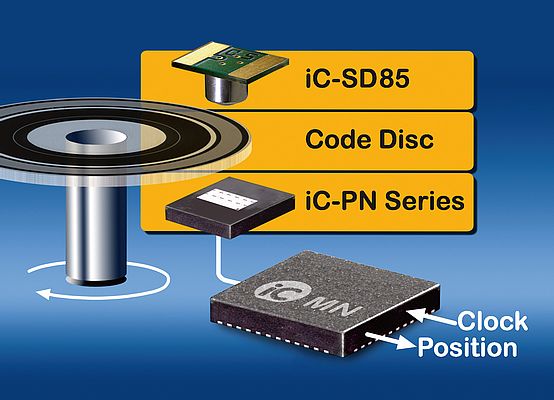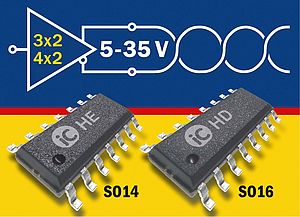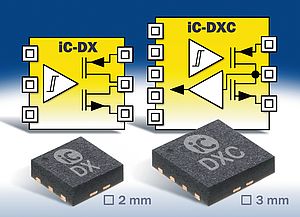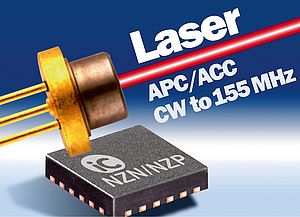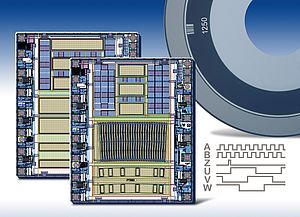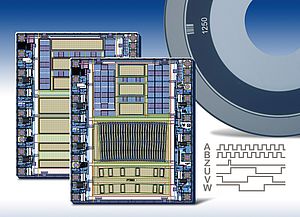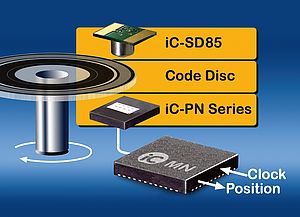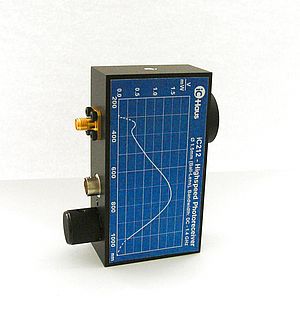A minimal sensor area of just 1.9 x 3.3 mm is sufficient for the optical sensors in iC Haus' iC-PN series to scan encoder code discs and generate sine signals of top hi-fi quality. Evaluation is carried out by interpolating encoder iC-MN using a nonius calculation, permitting a very high angle resolution of 21 bits, for example, with a small code disc diameter of only 26 mm. As opposed to conventional absolute encoder sensors, iC-PN sensors do not scan digital position information, saving on assembly space and simplifying illumination. The smaller scanning surface and high sensitivity of the scanners help to reduce the amount of power needed for the obligatory LED; this proving beneficial to the LED's expected lifetime. iC-PN sensors and measurement standards for diameters of between 26 mm and 42 mm are available. iC-LSHC is a functionally compatible yet unstructured photo array for specific customized design. The photocurrent signals are converted into low-impedance and interference-resistant output voltages by low-noise amplifiers. A high transimpedance gain in the region of 1 to 4 MW means that at an illumination level of just 0.5 mW/cm2 signal voltages of several hundred millivolts are available at the outputs. iC-LSHC and iC-PN devices operate with a supply voltage of 5 V within a temperature range of -40 to 110°C. The optoBGA package they come in measures just ca. 6 x 5 mm, saving on valuable board space. iC-PN is typically deployed as an analog Nonius encoder in conjunction with iC-MN, interpolating analog sine signals on several channels. This enables the accuracy of reading to be increased, as with a Vernier caliper. Position information is extracted from the relative phase shift of very few analog signals; a principle known as Nonius. This approach not only reduces system costs but also presents a small form factor alternative to position encoders, opening up new avenues in the field of application. In each channel iC-MN has a separately adjustable signal conditioning unit with a sample-and-hold stage which halts the conditioned analog signal for the ensuing sequential digitization process. To this end a high-precision SAR A/D converter is provided which has an adjustable interpolation resolution of 8 to 13 bits. The non-linear A/D converter makes use of the tangent function and analyzes the sine and cosine simultaneously. In order to compute the high-resolution angle positions two and three-track nonius calculations can be configured, which enable resolutions of up to 25 bits (0.04 angle seconds from 360°). The converter, which measures just 7 x 7 mm in QFN48, is protected at the cable end against reverse polarity and false connections and contains the RS422 transceiver for the serial data interface. Data is output in an SSI or BiSS protocol at clock rates of up to 10 Mbit/s. All of the main functions of the chip are monitored and can be configured for alarm indication. Typical sensor errors, such as loss of signal due to wire breakage, short circuiting, dirt, or aging, for example, are recognized and signaled to the controller.
Edited by: Teoman Tugsuz



